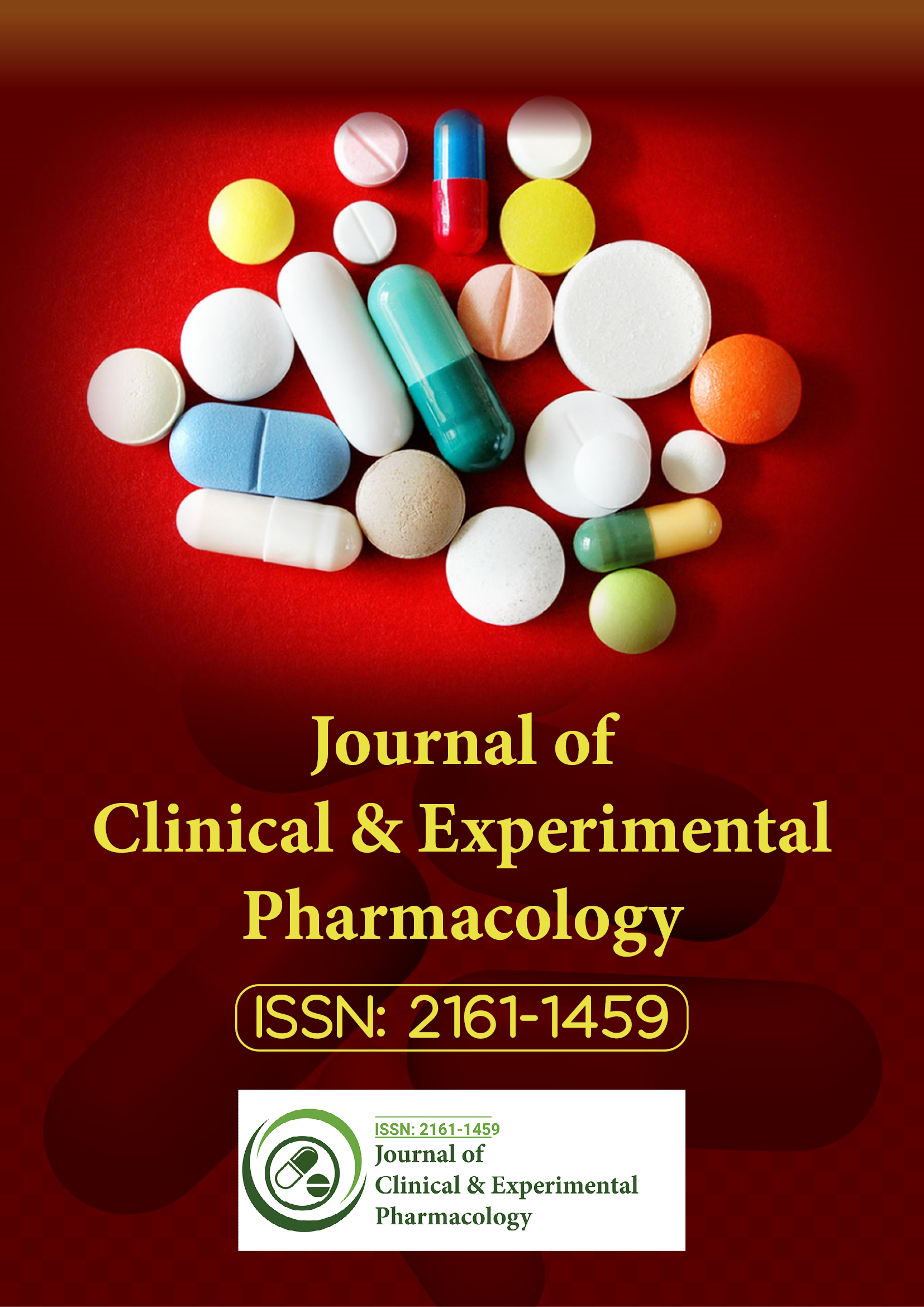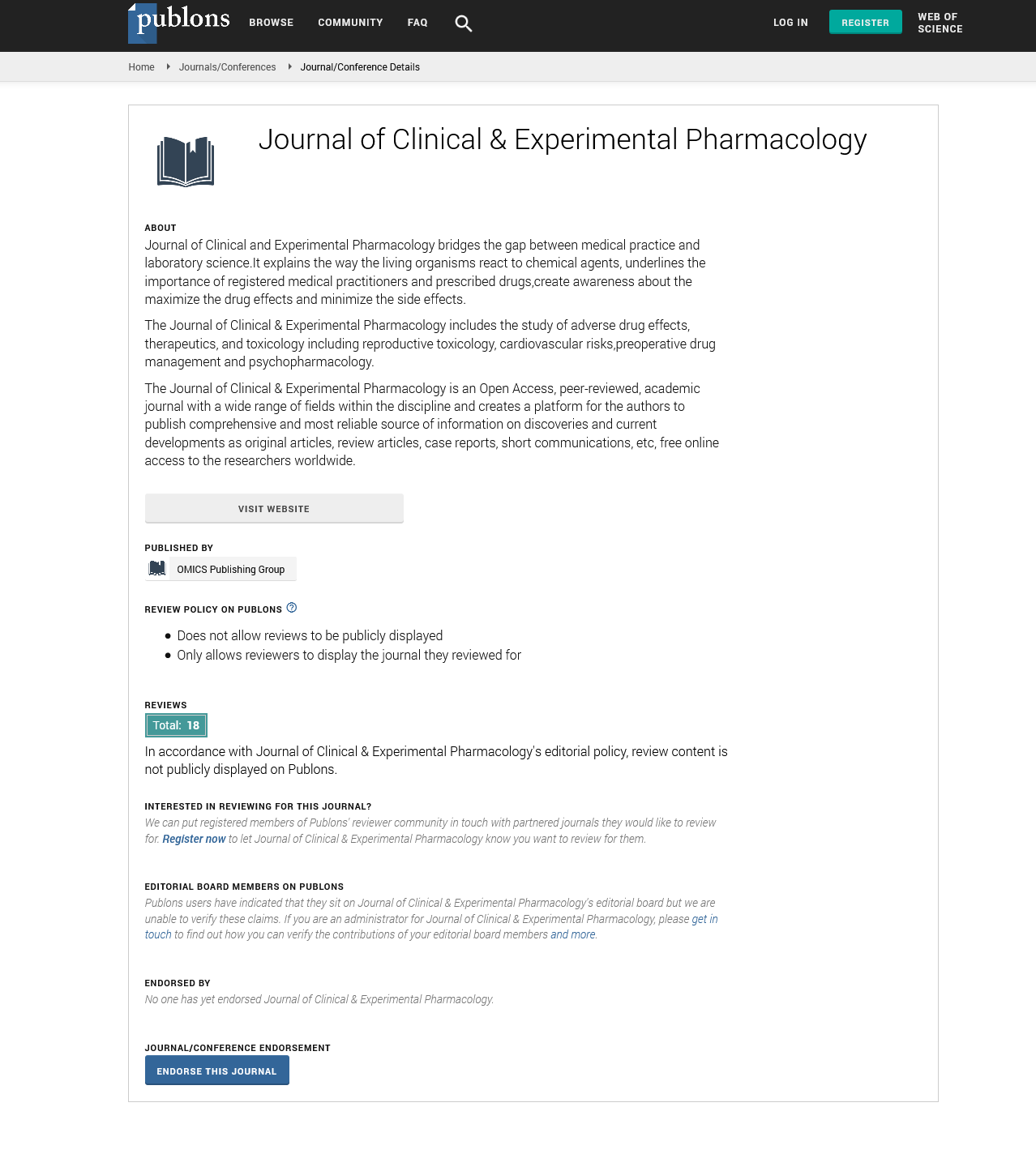Indexed In
- Open J Gate
- Genamics JournalSeek
- China National Knowledge Infrastructure (CNKI)
- Ulrich's Periodicals Directory
- RefSeek
- Hamdard University
- EBSCO A-Z
- OCLC- WorldCat
- Publons
- Google Scholar
Useful Links
Share This Page
Journal Flyer

Open Access Journals
- Agri and Aquaculture
- Biochemistry
- Bioinformatics & Systems Biology
- Business & Management
- Chemistry
- Clinical Sciences
- Engineering
- Food & Nutrition
- General Science
- Genetics & Molecular Biology
- Immunology & Microbiology
- Medical Sciences
- Neuroscience & Psychology
- Nursing & Health Care
- Pharmaceutical Sciences
Perspective - (2025) Volume 15, Issue 3
Evaluating Adverse Drug Reactions Using Pharmacoepidemiological Surveillance Systems
Brendon Paul*Received: 06-Jun-2025, Manuscript No. CPECR-25-29368; Editor assigned: 09-Jun-2025, Pre QC No. CPECR-25-29368 (PQ); Reviewed: 23-Jun-2025, QC No. CPECR-25-29368; Revised: 30-Jun-2025, Manuscript No. CPECR-25-29368 (R); Published: 07-Jul-2025, DOI: 10.35248/2161-1459.25.15.484
Description
Adverse drug reactions remain a significant concern in clinical pharmacology and public health, as they can lead to increased morbidity, prolonged hospitalizations and, in some cases, mortality. Despite rigorous preclinical and clinical testing, not all adverse events can be predicted before a drug enters the market. This is due to limitations in sample size, study duration and the controlled environment of clinical trials.
Pharmacoepidemiological surveillance systems play an important role in identifying, evaluating and managing these adverse reactions once drugs are approved and widely used. Pharmacoepidemiology is the study of the use and effects of drugs in large populations, drawing on methodologies from epidemiology and pharmacology. Surveillance systems within this field use a range of data sources including spontaneous reporting databases, electronic health records, insurance claims and registry data to monitor drug safety in real-world settings. These systems help detect unexpected or delayed adverse effects, assess their frequency and identify risk factors such as age, comorbidities and concurrent drug use.
One of the most widely used sources of safety data is spontaneous reporting systems. These allow healthcare professionals, patients and pharmaceutical companies to submit reports of suspected adverse drug reactions. Examples include the FDA Adverse Event Reporting System (FAERS) in the United States and EudraVigilance in the European Union. While these systems are valuable for early signal detection, they are subject to limitations such as underreporting, duplicate entries and missing information. Nonetheless, they often provide the first indication of a potential drug safety issue, prompting further investigation.
In addition to passive surveillance, active monitoring methods have been developed to improve detection and understanding of adverse events. These include cohort studies, case-control studies and self-controlled case series using large healthcare databases. These approaches allow researchers to calculate incidence rates, relative risks and causal relationships with greater confidence. They can also be used to compare the safety profiles of different drugs within the same therapeutic class.
The integration of electronic health records into pharmacoepidemiological studies has expanded the scope and depth of drug safety research. These records contain detailed patient information including demographics, diagnoses, prescriptions, laboratory results and outcomes. By linking exposure data to adverse event outcomes, researchers can identify patterns and associations that may not be evident through spontaneous reports alone. Furthermore, longitudinal data enable the study of long-term adverse effects that may develop over years of treatment.
Another important development is the use of data mining techniques to detect safety signals. Algorithms such as disproportionality analysis and Bayesian methods are used to identify statistically significant associations between drugs and adverse events. These tools help prioritize signals for further assessment and reduce the time lag between adverse event occurrence and regulatory response. However, statistical signals alone do not prove causation and must be interpreted within the context of clinical and pharmacological plausibility.
Pharmacoepidemiological surveillance is also used to assess the impact of regulatory actions such as labeling changes, safety warnings and drug withdrawals. These studies can evaluate whether such interventions effectively reduce the incidence of adverse events or lead to changes in prescribing patterns. For example, warnings about cardiovascular risks associated with certain Nonsteroidal Anti-Inflammatory Drugs (NSAIDs) led to measurable declines in their use and a corresponding reduction in related adverse outcomes.
The role of pharmacogenetics in drug safety is an emerging area within pharmacoepidemiology. Genetic variations can influence drug metabolism, efficacy and susceptibility to adverse effects. By combining genetic data with real-world outcomes, researchers can identify subpopulations at higher risk and tailor drug use accordingly. Examples include the association between HLAB*5701 and hypersensitivity to abacavir, or CYP2C9 variants affecting warfarin dosing and bleeding risk.
Patient engagement in adverse event reporting is gaining attention as a complementary strategy to professional reporting. Patients often provide insights into side effects that may not be fully captured during clinical consultations. Mobile apps, online platforms and digital health tools are increasingly being used to facilitate patient-driven reporting and real-time safety monitoring.
Challenges in pharmacoepidemiological surveillance include data quality, privacy concerns and methodological complexities in adjusting for confounding variables. Misclassification of exposure or outcomes can lead to biased results. Therefore, careful study design, sensitivity analyses and validation of data sources are essential to ensure the reliability of findings. Collaboration between regulatory agencies, academic institutions, healthcare providers and the pharmaceutical industry is vital to address these challenges and strengthen the safety monitoring infrastructure.
International initiatives such as the WHO Programme for International Drug Monitoring and multi-country networks like Sentinel (USA) and CNODES (Canada) have further enhanced the global capacity for drug safety surveillance. These collaborative efforts promote data sharing, standardization of methods and the conduct of large-scale studies that transcend individual healthcare systems.
In conclusion, pharmacoepidemiological surveillance systems are essential tools for evaluating adverse drug reactions in real-world settings. By utilizing diverse data sources and analytical approaches, these systems help detect, quantify and manage drug safety issues that may not be evident during clinical trials. The integration of electronic health records, data mining techniques and patient engagement is expanding the reach and effectiveness of surveillance activities. Continued investment in infrastructure, data quality and methodological innovation will ensure that pharmacoepidemiology remains a cornerstone of post-marketing drug safety and public health protection.
Citation: Paul B (2025). Evaluating Adverse Drug Reactions Using Pharmacoepidemiological Surveillance Systems. J Clin Exp Pharmacol. 15:484.
Copyright: © 2025 Paul B. This is an open-access article distributed under the terms of the Creative Commons Attribution License, which permits unrestricted use, distribution and reproduction in any medium, provided the original author and source are credited.

